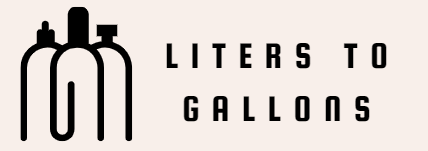Formula to convert 6 gallons to liters is to multiply 6 by 3.75841178 (this is the value for 1 gallon to liter).
Convert 6 Gallons to Liters results
6 x 3.78541178 = 22.71247068
6 gal = 22.71 l
Convert 6 gallons to liters much easier right now
In everyday life, we often encounter the need to convert different units of measurement.
Whether we are preparing for a trip, working in a laboratory or cooking, the correct conversion of measurement units is essential.
One of the frequently encountered conversions is the one between gallons and liters. This transformation is essential, especially for those who live or travel between countries that use different measurement systems.
Let’s see how 6 gallons are converted into liters and why this conversion is so important.
Calculation method
To convert 6 gallons to liters, first of all we need to know the type of gallon used.
In the United States, one US gallon is equivalent to approximately 3.78541 liters.
So, to convert 6 US gallons to liters, we do the following calculation:
6×3.78541=22.71246 liters
In the United Kingdom, the imperial gallon is slightly larger, equivalent to approximately 4.54609 liters.
So, to convert 6 imperial gallons to liters, the calculation is:
6×4.54609=27.27654 liters
Uses of conversion
Converting between gallons and liters is extremely useful in many contexts.
For example, if you are a driver moving from the US to Europe, you need to know how to convert gallons to liters to understand fuel consumption and gas prices.
In the kitchen, if you want to prepare something delicious according to some international recipes, the correct conversion between gallons and liters will help you measure the ingredients exactly, making sure that the final result is the right one.
Various approaches
In 1824, the United Kingdom standardized the imperial gallon, while in the United States, the American gallon was defined based on the wine gallon used in colonial times.
Converting gallons to liters has multiple advantages.
First, it facilitates international communication, ensuring that all commercial partners and scientific collaborators use compatible measurements.
Secondly, it promotes uniformity in research and technology, and last but not least, it helps people who travel or work abroad to adapt quickly and efficiently to the new measurement systems.
It’s simple, the answer for 6 gallons is twenty-two point seven one liters
